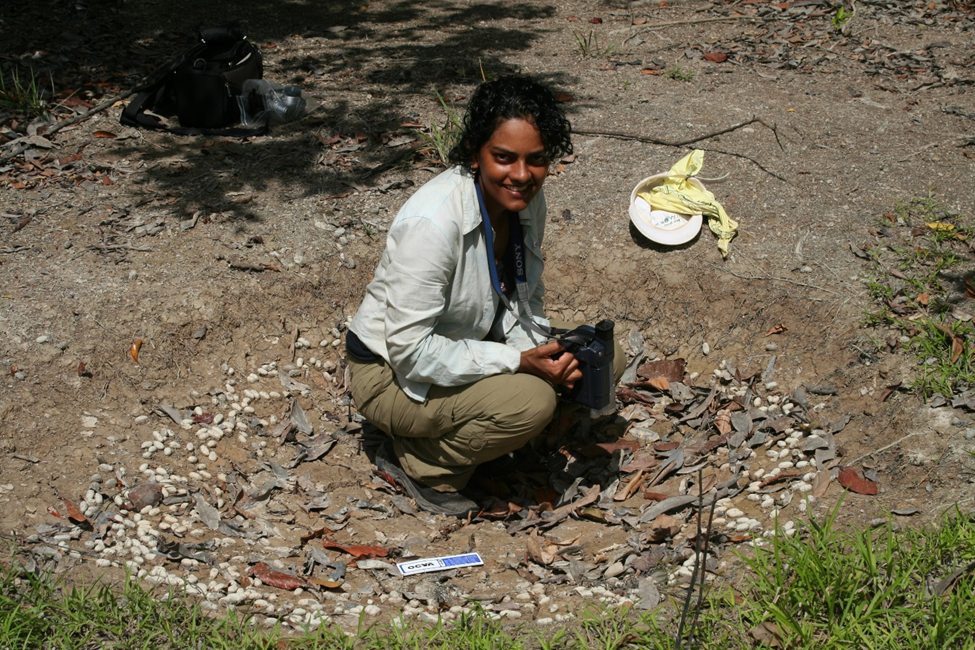Recent Headlines

Dr. L. Cynthia Watson inspects a huge arapaima nest that had been occupied in a previous flood season
A Giant Among Giants
The discovery of a "giant" Arapaima among the freshwater fish of the Essequibo River Basin could have implications for ongoing ecotourism efforts of local Guyanese communities.
A new study published in Fisheries Research suggests individuals of the Arapaima population from the Essequibo River basin, Guyana, can attain weights of about 327 kilograms, or 721 pounds. That would make them the heaviest strictly freshwater fish in the Western Hemisphere, and the heaviest Arapaima in South America - truly giants among giants - and would put them in a rarified weight category with the endangered Mekong giant catfish, which can attain 350 kilograms. The local indigenous peoples call these fishes, "Oma," aptly translating to "Mother of all Fishes."
To derive that estimate, the authors, doctors L. Cynthia Watson and Donald J. Stewart, from the SUNY College of Environmental Science and Forestry in Syracuse, New York, recorded body lengths and corresponding weights for a sample of fishes ranging from 2.3 to 89 kilograms (0.66 to 2.02 meters total length) and used a statistical model to predict weight at 3 meters. Local indigenous fishermen in the region previously have observed Arapaima of at least 3 meters. Due to past overfishing, however, it is rare today to find an Arapaima over about 2.4 meters.
The authors compared their results to similar estimates for the central Amazon (Mamirauá Reserve, Amazonas State, Brazil). For that region, new data suggest a 3-meter Arapaima could attain 240 kilograms (529 pounds). That estimate also is higher than a previously published estimate of 200 kilograms, but still substantially less than the estimate for Guyana. Other giant fishes of the Amazon and Guyana include the Piraiba (called Lau lau in Guyana), a catfish that can grow to 3.5 meters, and about 200 kilograms.
Watson noted, "This discovery may have important implications for ongoing efforts of local communities to develop ecotourism, including catch-and-release sport-fishing, in the Essequibo basin." Arapaima are obligate air-breathing fishes, which means they must come to the surface to breathe every 5-15 minutes (i.e., fishy analogs to whales and dolphins).
"To be in a small canoe when such huge fishes roll on the surface nearby is a moment to be cherished - some might say heart-stopping - as is catching one on hook and line," said Watson. If properly managed, fish-watching and sport-fishing constitute 'non-consumptive' uses of these extraordinary fishery resources, with potential for substantial economic benefits to local communities.
That in turn can facilitate conservation of critical aquatic ecosystems and aid recovery of these once seriously depleted populations. In 2001, there remained only 820 individuals over 1 meter in the entire upper Essequibo basin. They were poised on the brink of extirpation. The Essequibo basin is isolated from the Amazon basin, and it has a comparatively small area of suitable Arapaima habitat. With prohibitions on commercial fishing after 2001, their numbers are now increasing. Stewart cautioned, however, "sustaining these populations in the face of human encroachments and changing climate will require long-term vigilance."